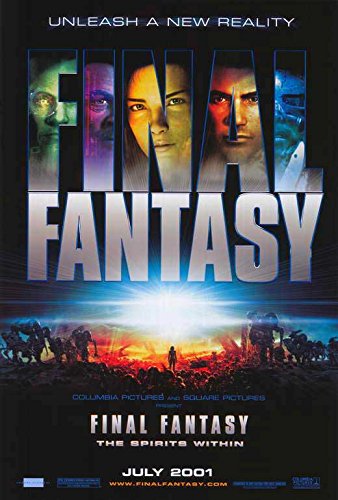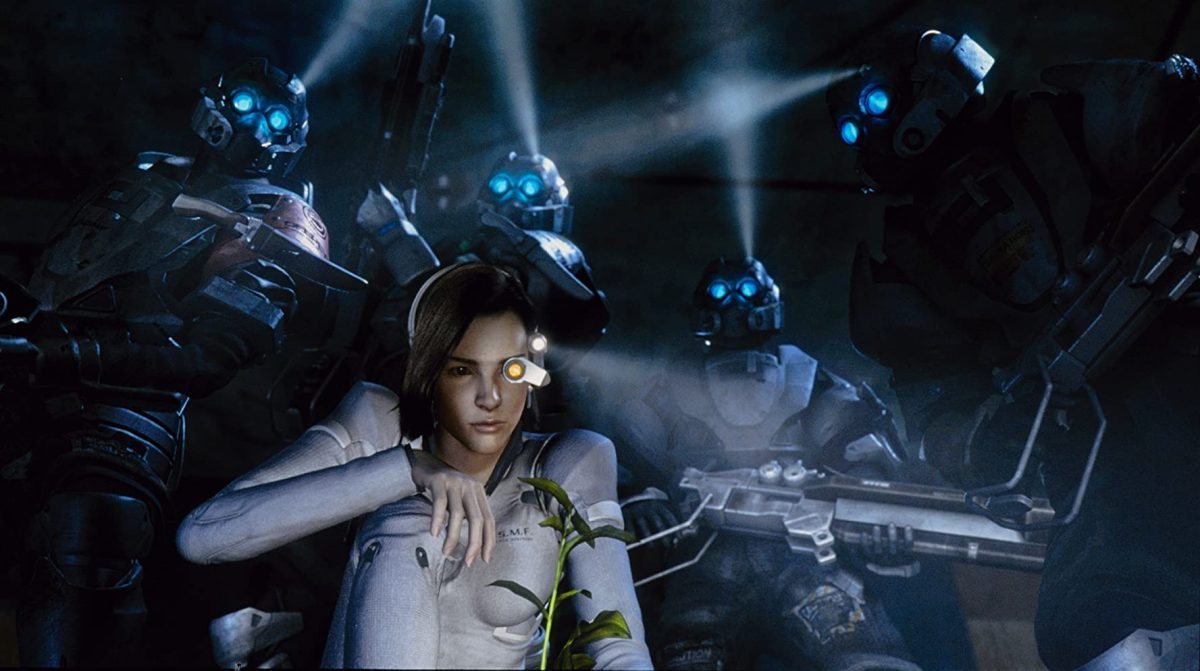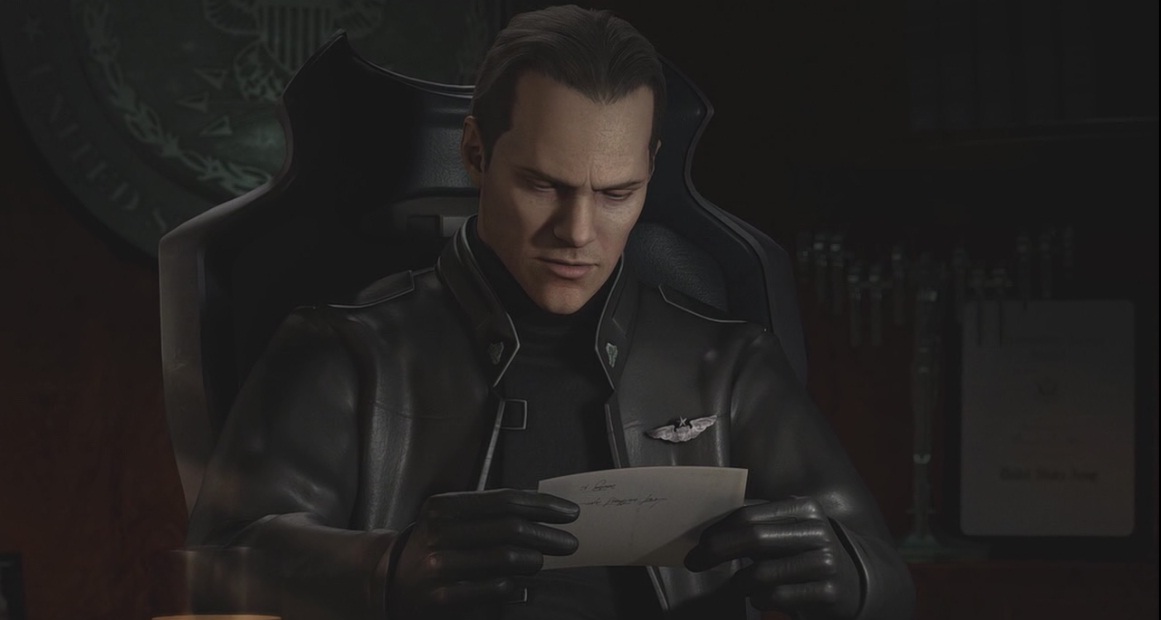
Whenever the Hollywood film Final Fantasy: The Spirits Within (2001) is mentioned, chances are you’ll hear it was a costly flop. Receiving middling reviews from critics and even called an outright box office bomb, it ruined SquareSoft’s “Square Pictures” venture and played a role in its eventual merger into Square Enix. Flawed as it was, however, it’s still a trailblazer for CGI in movies.
Directed and penned by Final Fantasy creator Hironobu Sakaguchi, this piece of cinema was, for its time, the most expensive video game adaptation ever made (USD 130 Million), which was only displaced a decade later by Prince of Persia: The Sands of Time (2010). With a star-studded cast and lofty ambitions, it’s not hard to see why. Yet, dig a little deeper and you’ll find that even with its faults, there’s a genuine gem to be found here.
Brave New World
The Spirits Within, rather than adopting a game from the series, instead takes place in a futuristic Earth. It’s the year 2065, and the world is reeling from invading aliens called Phantoms. Mankind continues to hold out in the remaining “barrier cities” in a desperate bid to stave off the inevitable. Amidst this quagmire, Dr. Aki Ross (Ming-Na Wen) is out in the ruins of old New York seeking the sixth “Spirit” signature, believing that gathering all eight kinds would defeat the extraterrestrial menace once and for all. A close encounter with one of the energy-creatures is averted, however, when she’s rescued by a squad led by military vet and old flame Gray Edwards (Alec Baldwin). Meanwhile, in the halls of power, General Hein (James Woods) has plans of his own in getting the council’s approval to use his orbital Zeus cannon, despite concerns it could harm the hypothetical Gaia Spirit.
Sony Pictures’ 2001 trailer, showcasing both the film’s impressive visuals and its weaker elements at once. (Source: YouTube)
As is made evident, an effort was made to make the premise much more palatable to Western audiences, to the point of looking almost unrecognizable. Compared to the games, there’s a more overt science-fiction bent, and barring franchise nods like Dr. Sid (Donald Sutherland), fans might not immediately recognize anything familiar to the games. This made the postapocalyptic setting, something that was already prevalent at the time with films like The Matrix (1999), come off as superficially derivative. The predictability of the main plot, which follows Aki and Gray on their mission to save the world, and their rekindling romance, doesn’t help either.
Digging a little deeper, though, reveals that there’s a bit more Final Fantasy here than is often perceived. As revealed in the “Making Of” documentary, the movie was inspired by James Lovelock’s Gaia hypothesis, which also popped up in the games, notably Final Fantasy VII (1997). The related focus on “more of a complex idea of life and death and spirit,” as Sakaguchi mentioned in the same feature, is driven home by his musings over his late mother’s death. All of which could be seen in the movie itself. It is there in how the Gaia Spirit is explored, the reveal of the Phantoms’ true nature, all the way down to the heroine’s name. The seemingly done to death sci-fi backdrop, thus, conceals a considerable degree of mysticism that wouldn’t be out of place in any entry in the long-running franchise.

A Giant (Flawed) Leap
All the above is conveyed through the movie’s innovative execution. It’s easy to forget that The Spirits Within is the first feature-length computer-generated movie to aspire to photorealism, and it shows.

Just about everything you see is impressive on a technical level. Whether it’s the grittiness of the technology shown, or the details on clothing and faces (especially seen with Aki’s hair), there’s a distinctly lived-in aesthetic to the largely sci-fi backdrops, albeit in muted if not bland color palettes. The more mystical elements, meanwhile, stand out even more, such as with how the Phantoms look genuinely unnatural and kill people by literally sucking out their souls. Even compared to more modern examples that use CGI extensively, like Alita: Battle Angel (2019), the sights can barely be called “dated” as even the more “uncanny valley” moments — inevitable due to the realistic look of the characters themselves — hold up remarkably well.
Given the amount of time, manpower, and resources invested, the CGI quality is not too surprising. Done over the course of about four years, Square Pictures utilized then-state of the art technology, as well as a staff of over 200 artists, to produce the movie. As Animation World Network noted at the time, they produced 141,964 frames (taking anywhere from 15 minutes to “over 7 hours per frame” to render) and, some 15 Terabytes of data. The lengths taken to bring Sakaguchi’s vision to life, on top of the sheer jump compared to even Pixar’s Toy Story 2 (1999), should not be understated.
By the latter half of the film, its quality really starts to show. Coincidentally, it’s not hard to see the influence it would have on the Mass Effect franchise, of all things. (Source: YouTube)
All these are further helped along by the performances of the voice actors. The leads certainly didn’t phone it in, whether it’s Ming-Na Wen bringing Aki’s emphatic yet determined personality to life, or James Woods’ hateful yet sympathetic flair for the villainous General Heim. From Grey’s squadmates (which include the stylings of Ving Rhames and Steve Buscemi), to Donald Sutherland’s soft-spoken yet wise delivery as Dr. Sid, combined with Elliot Goldenthal’s score blending celestial and action motifs, they do well to breathing life into the film. Unfortunately, much of the rest of it is hobbled by its plot and seeming dullness.
Far Ahead of its Time
The filmmakers had evidently high hopes for Final Fantasy: The Spirits Within. They were especially proud of their work on Aki, hoping she’d be used as a “virtual actress” for later films. Their ultimate failure is, in a sense, tragic.
Recording of a 2001 Late Night with Conan O’Brien segment, summing up the general sentiment then, and to a degree, now. Circa 2016. (Source: YouTube)
On top of its box office performance and mixed reception, it became something of a warped morality tale on Square’s Icarus-style hubris. Even in recent times, the movie tends to be seen as a disaster and a sticking point among certain online commentators. Even so, if not for the movie, would works like Mass Effect have been made, as you’d recognize them? Would later CGI movies have tried to be as ambitious while avoiding the pitfalls? Would Sakaguchi have been more successful had he waited a few more years for the technology to be more economical?
Whatever the answer may be, it’s still worth seeing the movie to find out for yourself.














